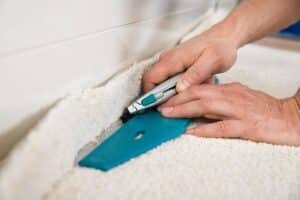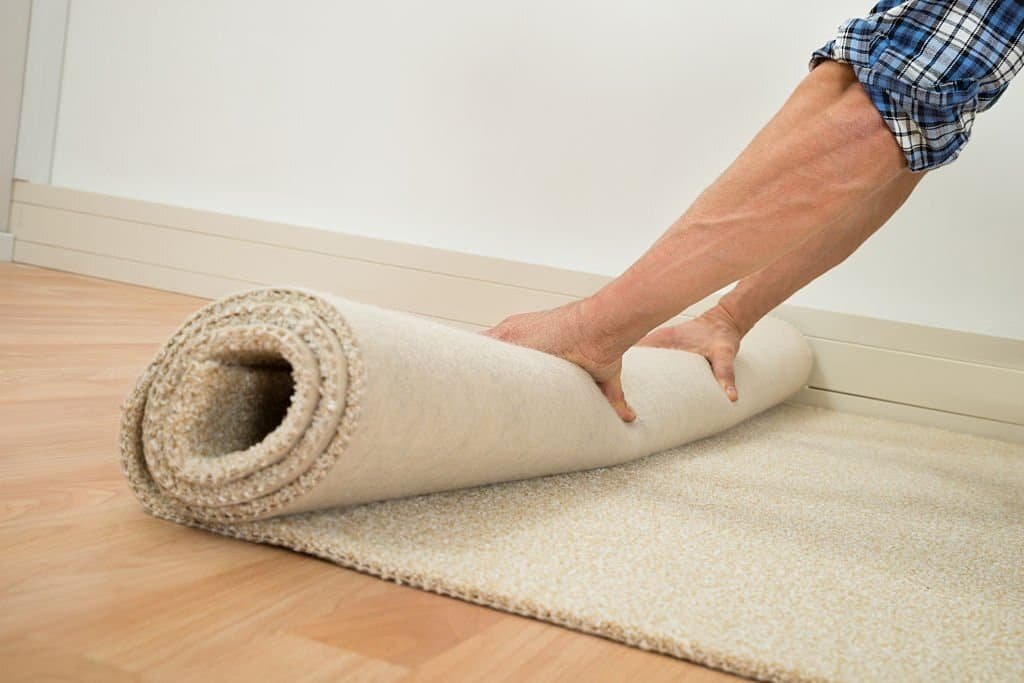Carpet Tack Strips Removal Methods
Carpet tack strips are thin, wooden, or metal strips with sharp tacks or nails used to secure carpeting to the subfloor. They are typically installed along the edges of a room, where the Carpet Tack Strips Removal meets the walls, and serve as a transition between the rug and the subfloor. In addition, carpet tack strips provide a stable base for the rug, helping to prevent it from bunching or slipping.
They are a common component of most carpet installations used in residential and commercial settings.

What Is Carpet Tack Strips
Carpet tack strips are thin wooden or metal strips that secure carpeting to the subfloor. They have sharp tacks or nails protruding from their surface that grip the carpet and hold it in place. Carpet tack strips are typically installed along the edges of a room, where the carpet meets the walls, and serve as a transition between the rug and the subfloor.
They provide a stable base for the carpet, helping to prevent it from bunching or slipping, and are a common component of most carpet installations.
Carpet Tack Strips , you will need the following tools:
- a hammer
- a pry bar
- a utility knife
Here’s the process:
- Cut the carpet along the edge of the tack strip with a utility knife.
- Next, gently use a hammer and pry bar to loosen the tack strip from the subfloor.
- Work along the strip, removing any nails or staples with the hammer as you go.
- Repeat this process for all tack strips in the room.
Note: Take care not to damage the subfloor or surrounding surfaces as you work. Wear gloves to protect your hands.
How do Carpet Tack Strips works
Carpet tack strips grip the carpet and hold it in place on the subfloor. The strips are typically installed along the edges of a room, where the carpet meets the walls. They have sharp tacks or nails that penetrate the carpet fibers and anchor them to the subfloor. This creates a secure and stable base for the carpet, preventing it from bunching or slipping.
The installation involves laying the carpet tack strip along the wall, nailing or stapling it to the subfloor, and then stretching the carpet over the strip and securing it with the tacks. The thoughtful approaches on the strip grip the carpet fibers, holding them securely in place on the subfloor. Carpet tack strips are an essential component of most carpet installations, providing a reliable and effective means of securing the carpet in place.
Benefits of Removing Carpet Strips
There are several benefits to removing carpet tack strips, including:
- Preparing for a new flooring installation: If you plan to install new floorings, such as hardwood or tile, removing the old carpet tack strips is an essential first step. This will create a smooth, clean surface for the new
- Improving the look of the room: Over time, carpet tack strips can become visible through the carpet, making the room look unattractive.
- Removing them can improve the room’s overall appearance and make it look cleaner and more inviting.
- Making repairs or refinishing the subfloor: If the subfloor has been damaged or requires refinishing, removing the carpet tack strips can make it easier to access and repair the subfloor.
- Improving air quality: Carpet tack strips can sometimes trap dust, dirt, and other particles, which can contribute to indoor air pollution.
- Removing them can help to improve the air quality in the room.
- Increasing property value: Updating the flooring in a room can increase its property value, making it a more attractive and valuable living space. Removing carpet tack strips is a necessary first step in this process.
Disadvantages Of Not Removing Carpet Tack Strips
- Trip hazard: Carpet tack strips can stick out from the floor and pose a tripping risk, especially for children, the elderly, or those with mobility issues.
- Damaged flooring: If left in place, the sharp metal tacks in the strips can scratch, dent or puncture the flooring, leading to costly repairs.
- Uneven surface: Carpet tack strips can cause a rough surface that can affect the floor’s appearance and make it difficult to walk on or place the furniture.
- Obstacle during cleaning: Carpet tack strips can be an obstacle during floor cleaning, making it difficult to clean effectively and efficiently.
- Inability to lay new flooring: If not removed, carpet tack strips can prevent the installation of new floorings, such as hardwood, tile, or laminate, without damaging the surface.
Here’s how to remove carpet tack strips without damaging the floor:
- First, loosen the carpet: Start by reducing the carpet near the tack strip. Next, use a pry bar to gently lift the edge of the rug away from the tack strip.
- Cut the carpet: Cut the rug into small sections, making sure not to damage the floor.
- Remove tacks: Using pliers, remove them and place them in a container. Make sure to wear gloves to protect your hands.
- Remove the strips: Once all tracks have been removed, use a pry bar to remove the strips from the floor gently. Work slowly and carefully to avoid damaging the flooring.
- Clean the floor: Clean the floor thoroughly to remove any residual adhesive or debris.
- Fill any holes: If holes are left in the floor from the tack strip, fill them with wood filler and sand smooth.
Following these steps, you can remove carpet tack strips without damaging the floor.
Conclusion:
In conclusion, carpet tack strips are a critical component in carpet installation, providing a secure and stable foundation for the carpet to rest on. However, they can pose a tripping hazard and damage the floor if left in place, making it necessary to remove them before installing new flooring. Proper removal of carpet tack strips is essential to ensure the longevity and appearance of the floor. With the right tools and techniques, anyone can remove carpet tack strips without damaging the floor.







